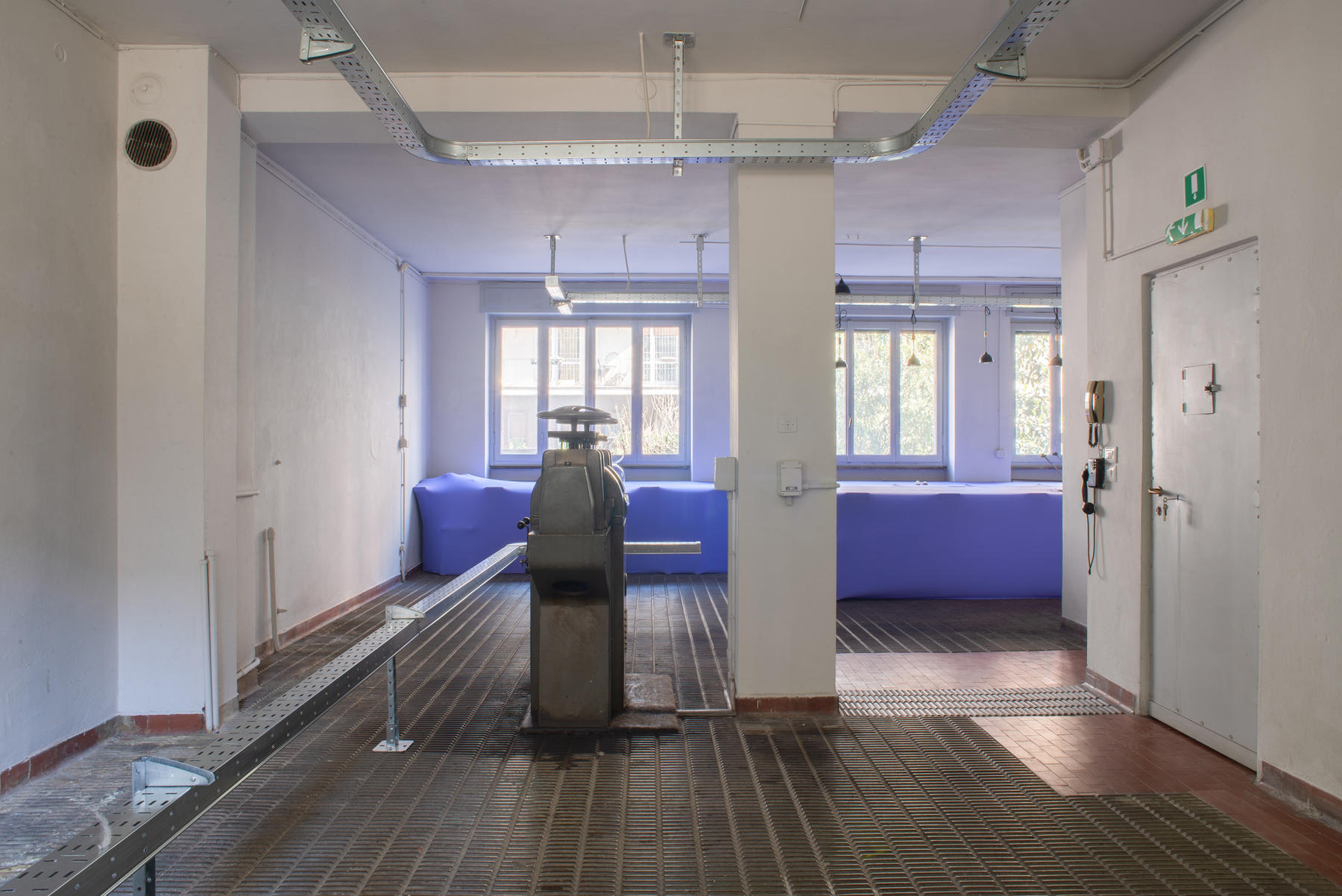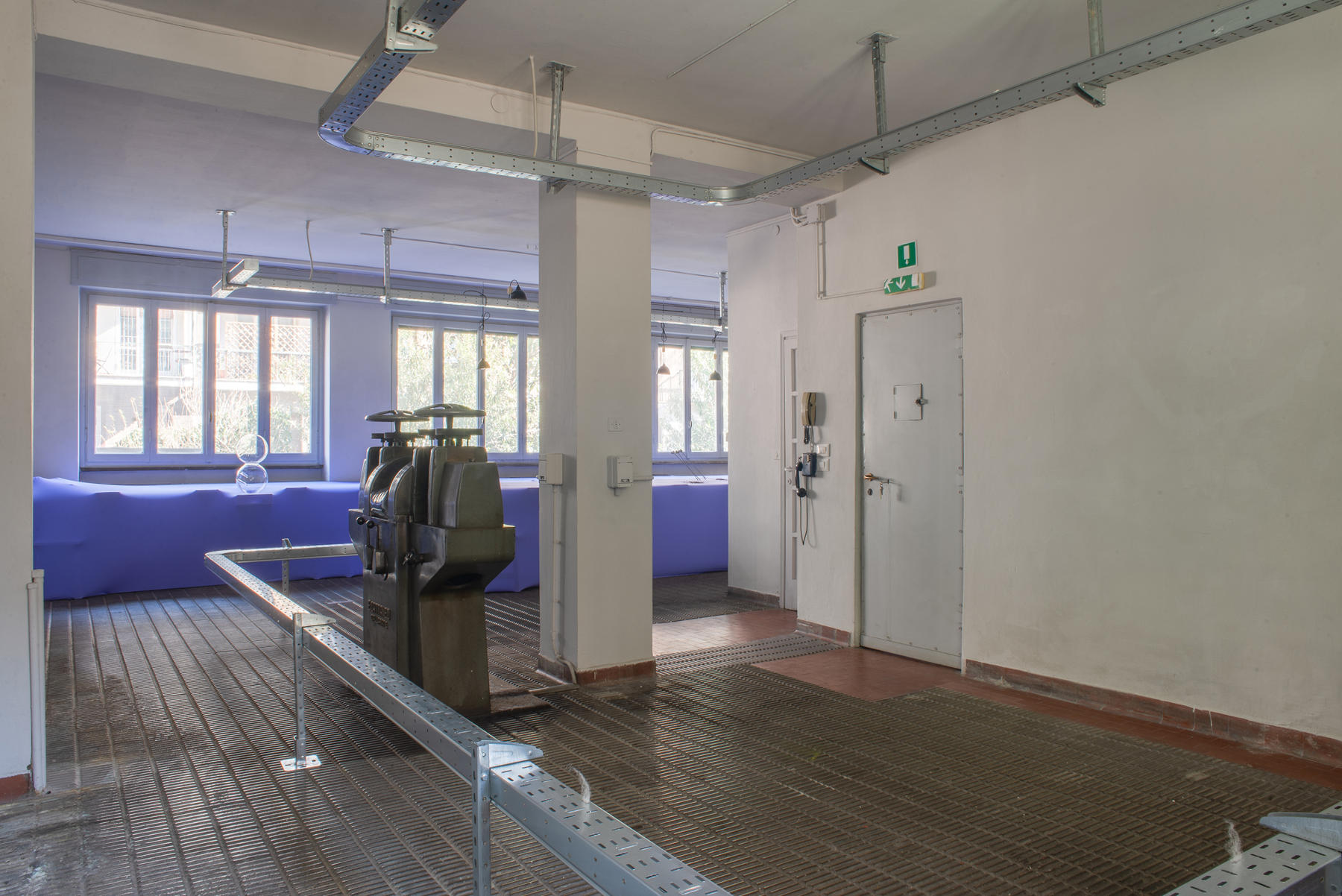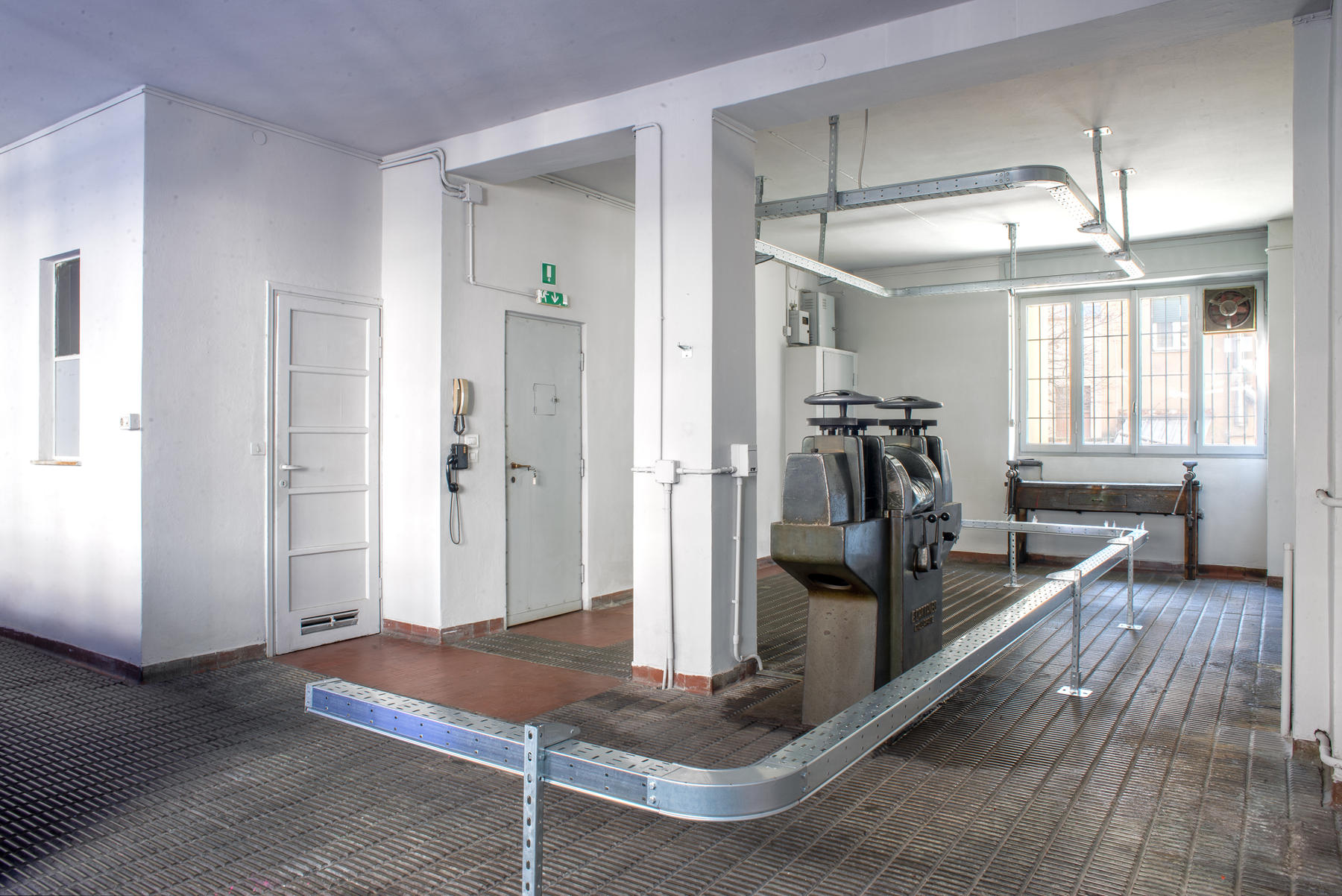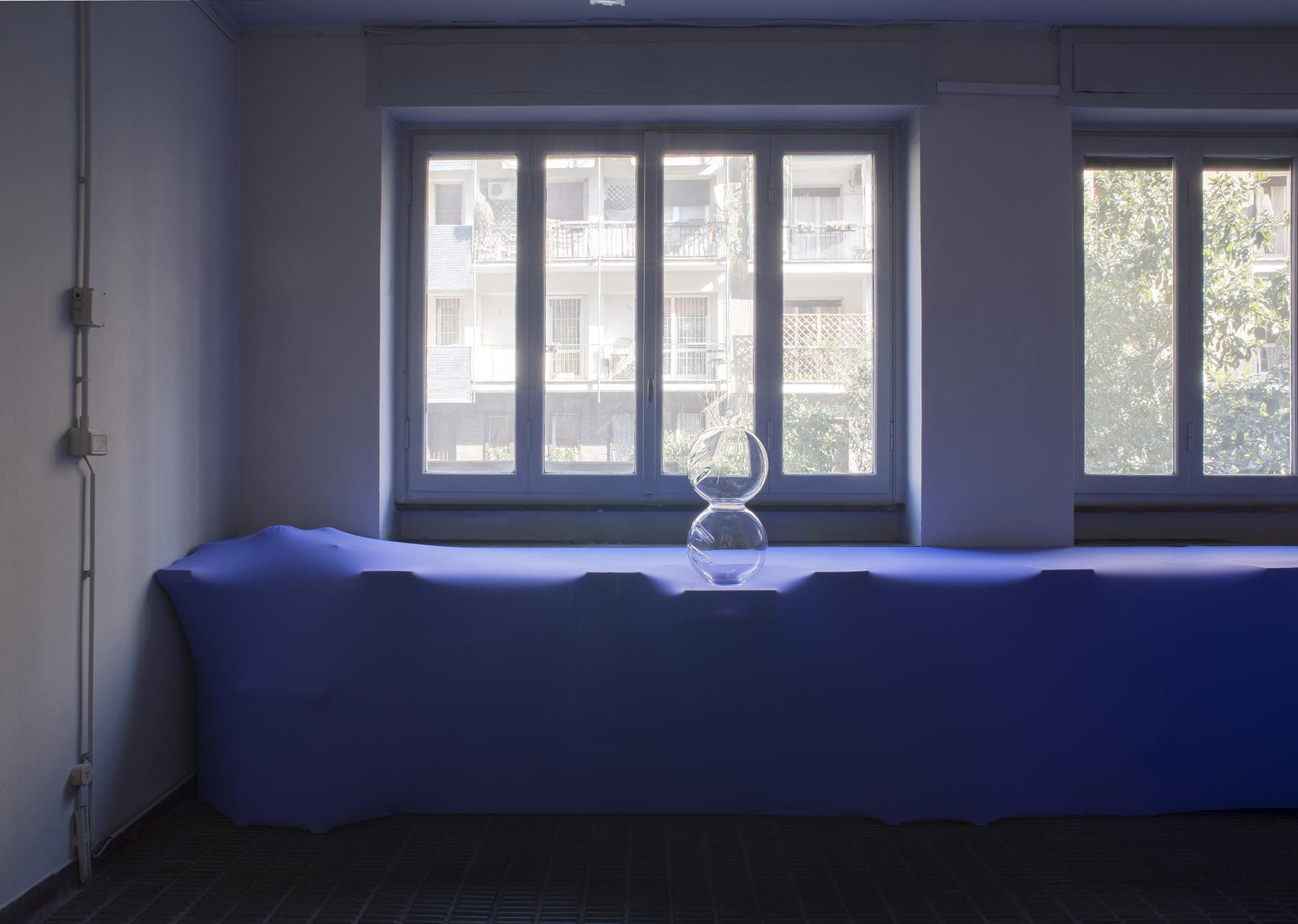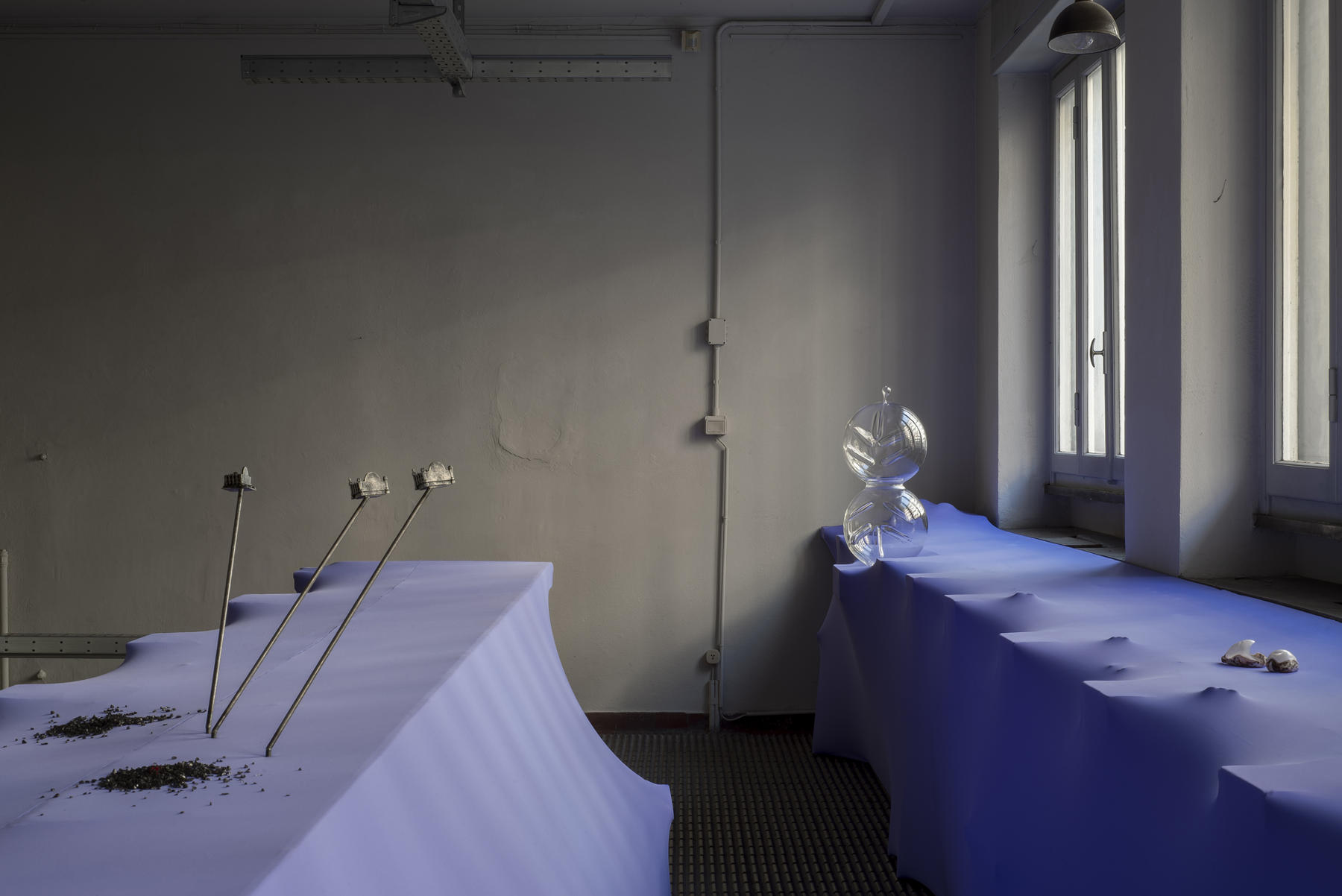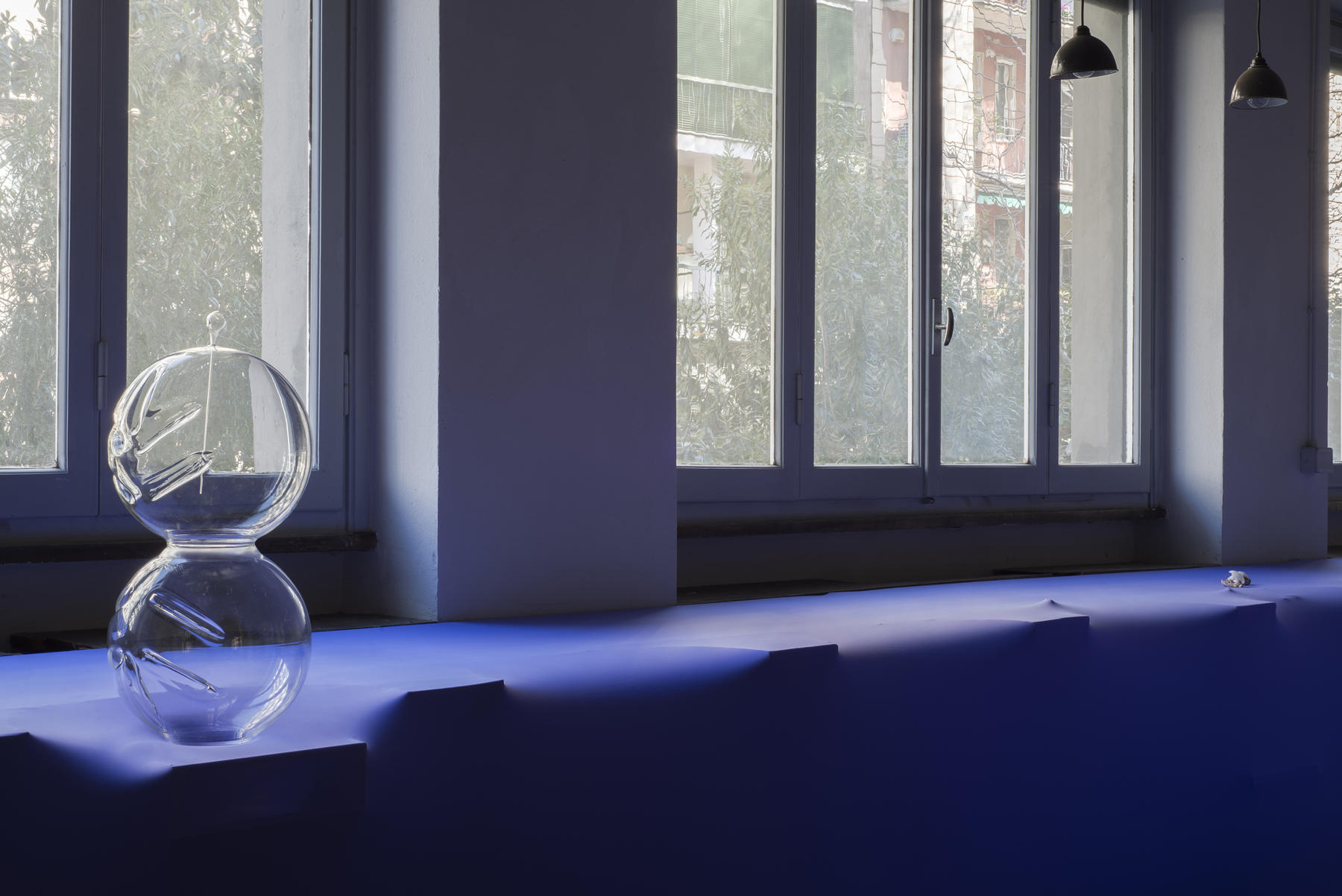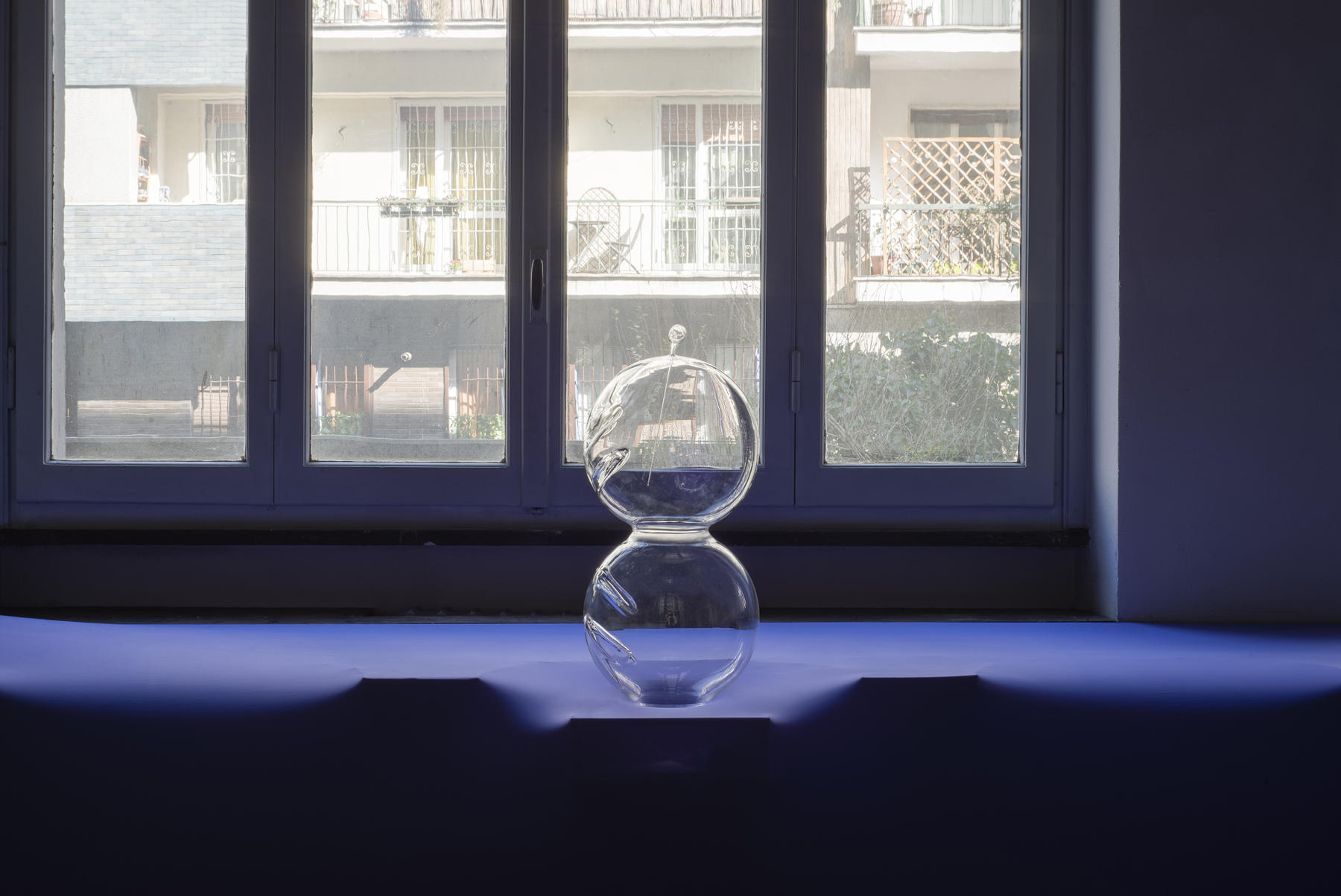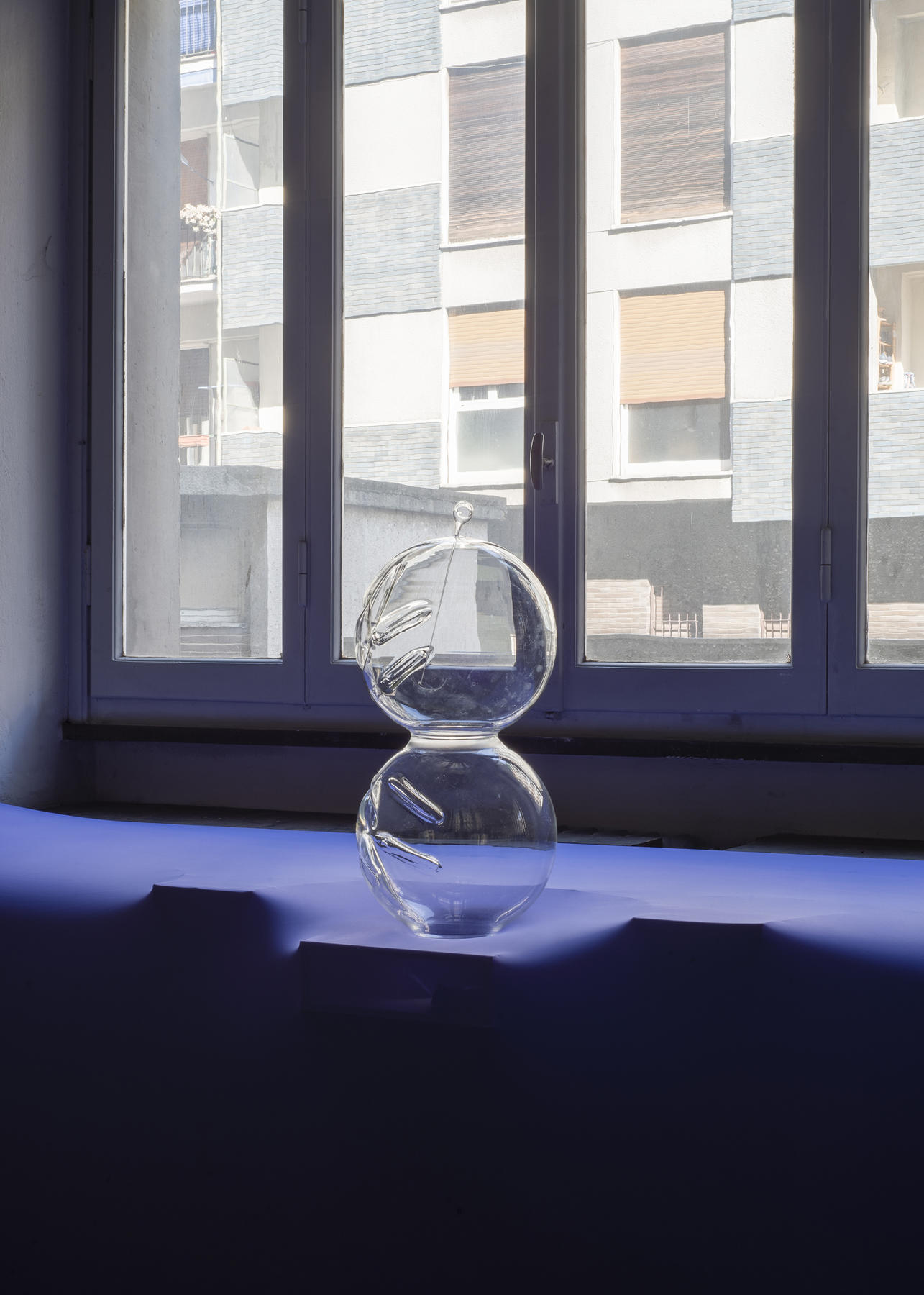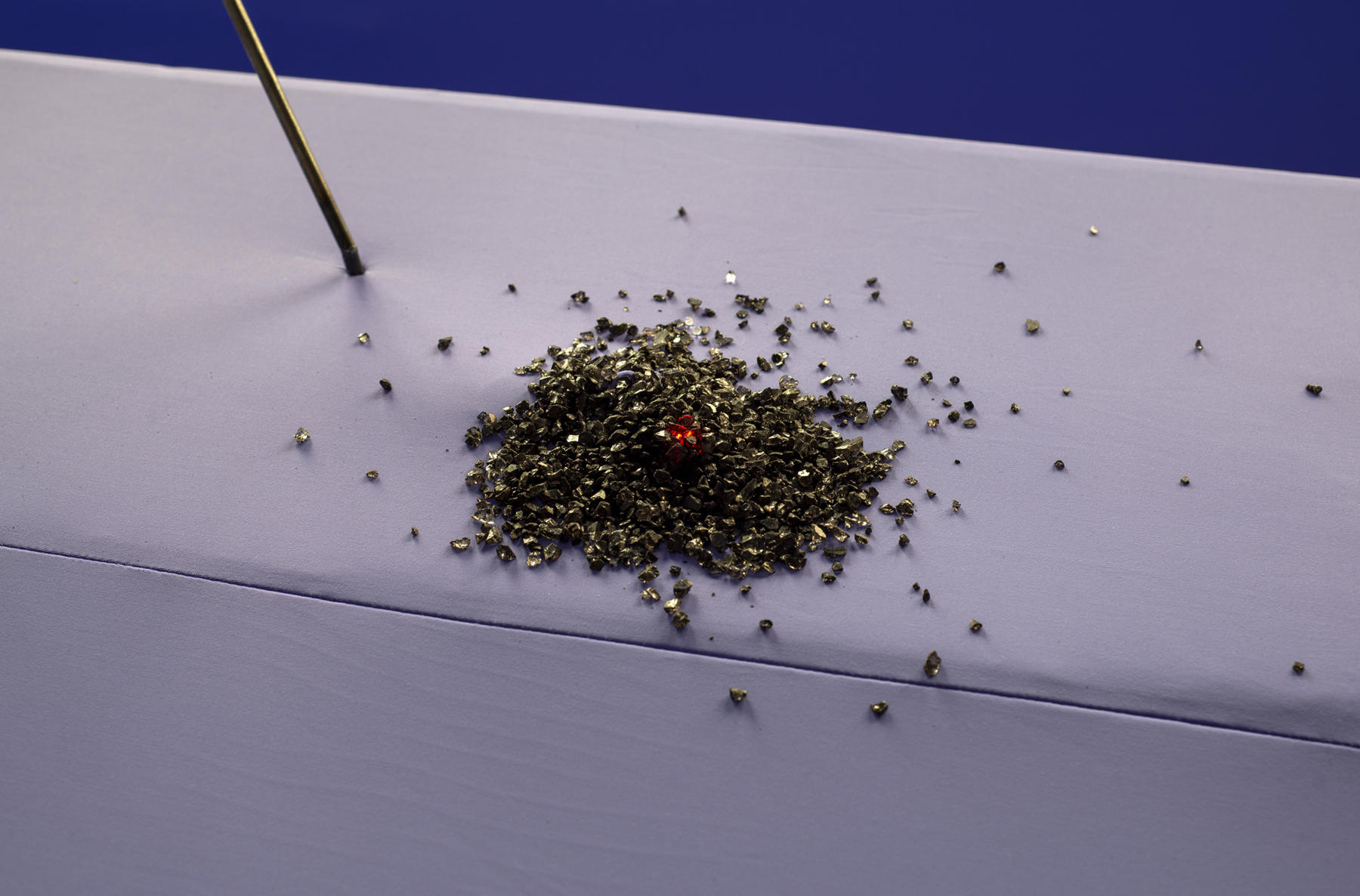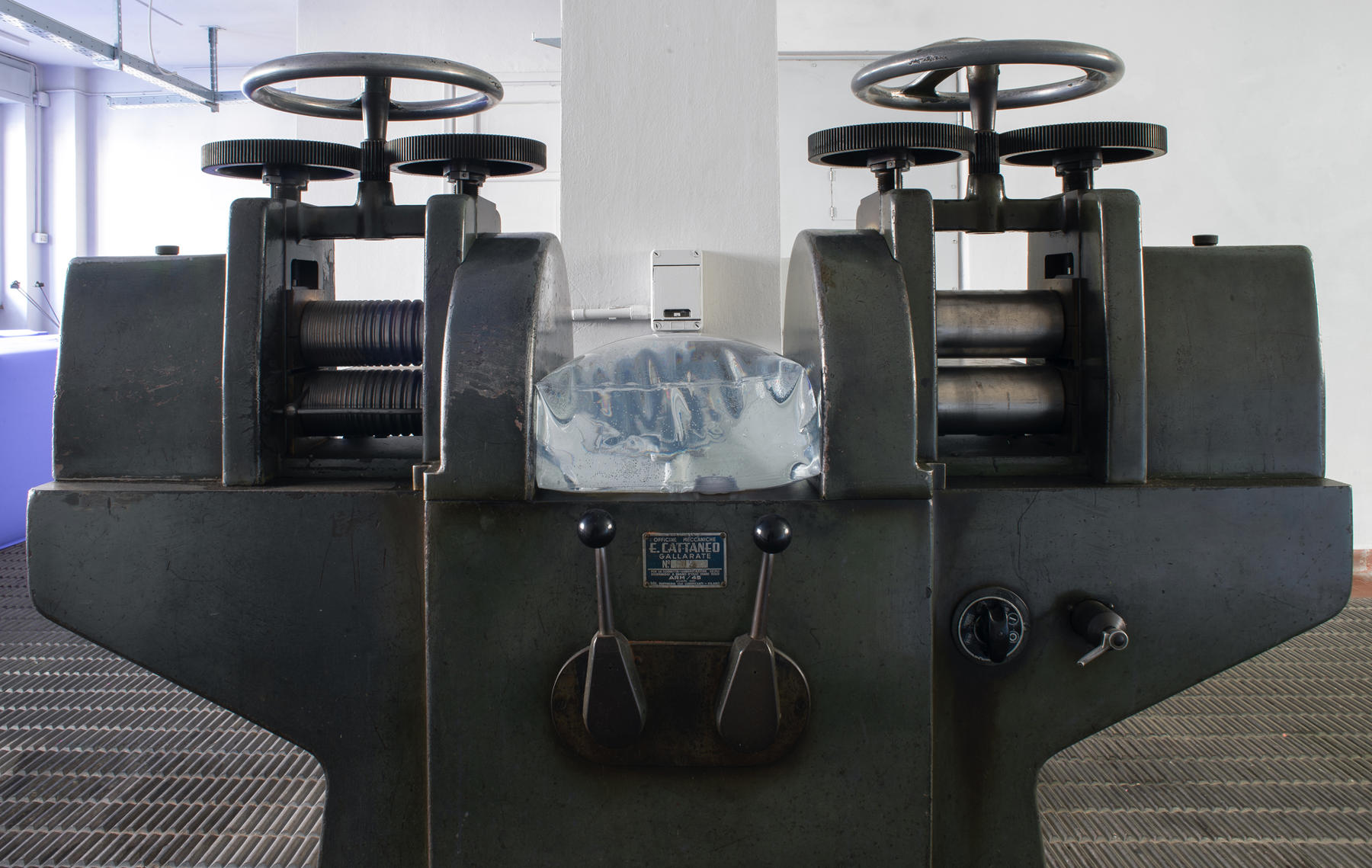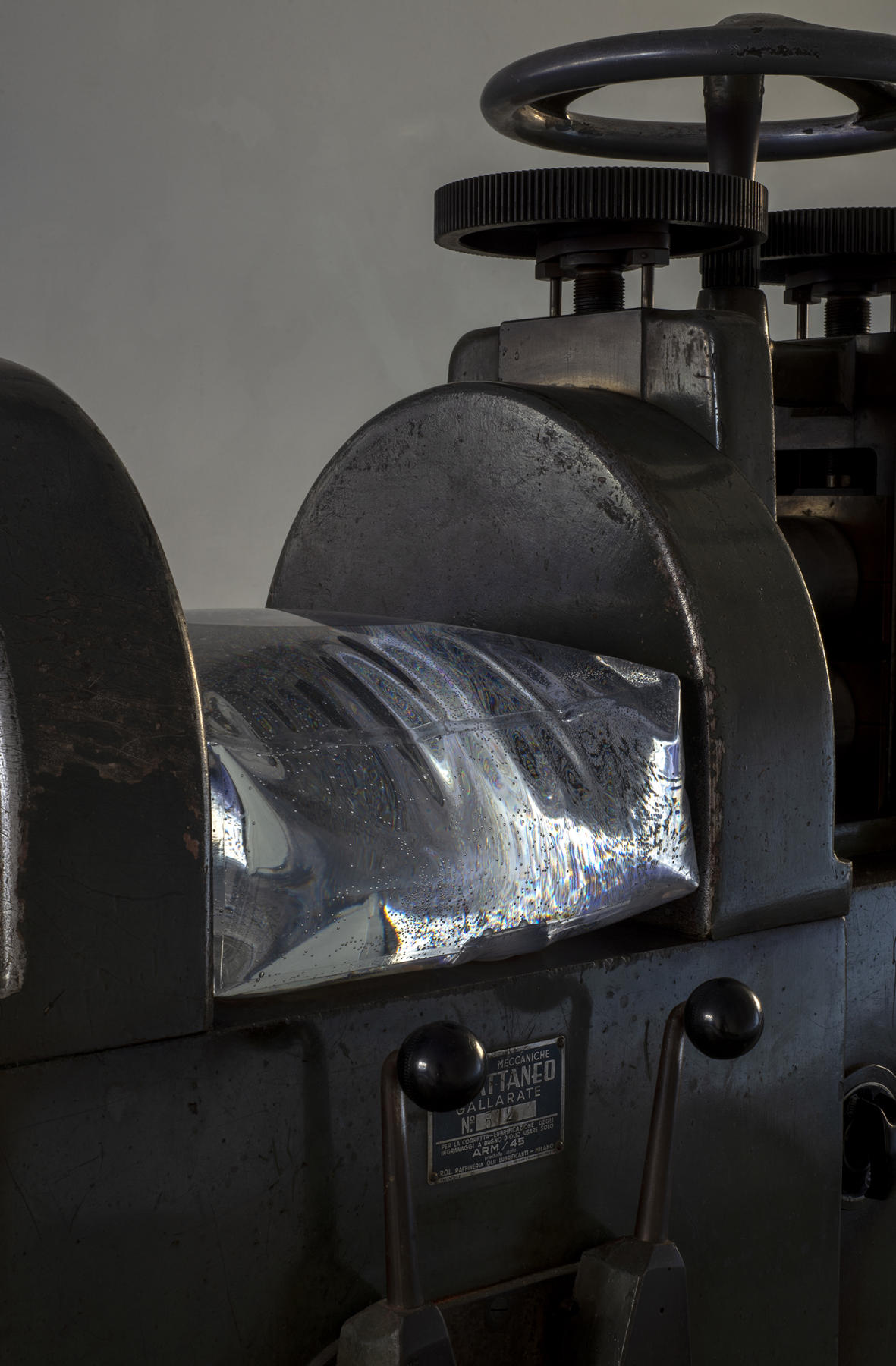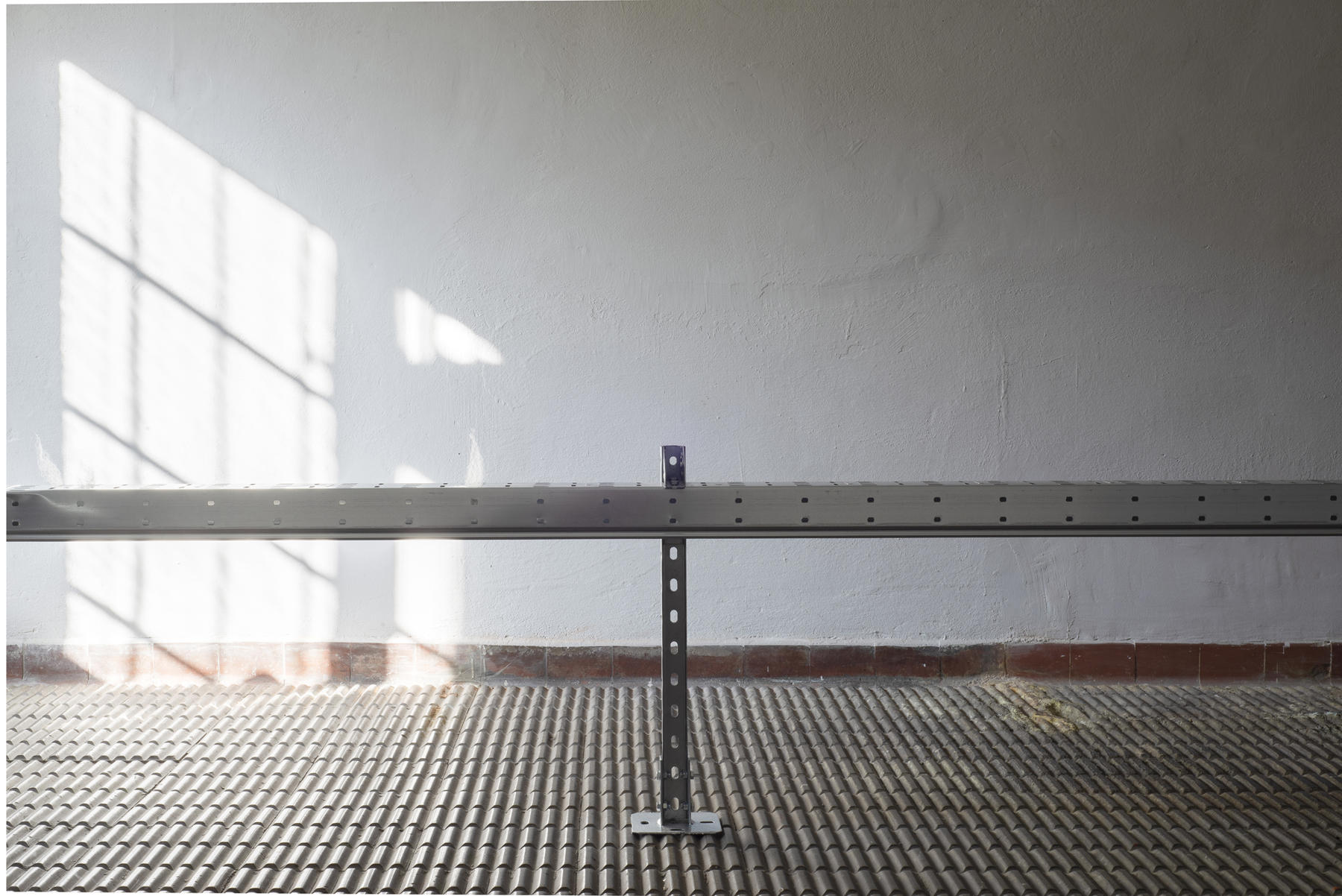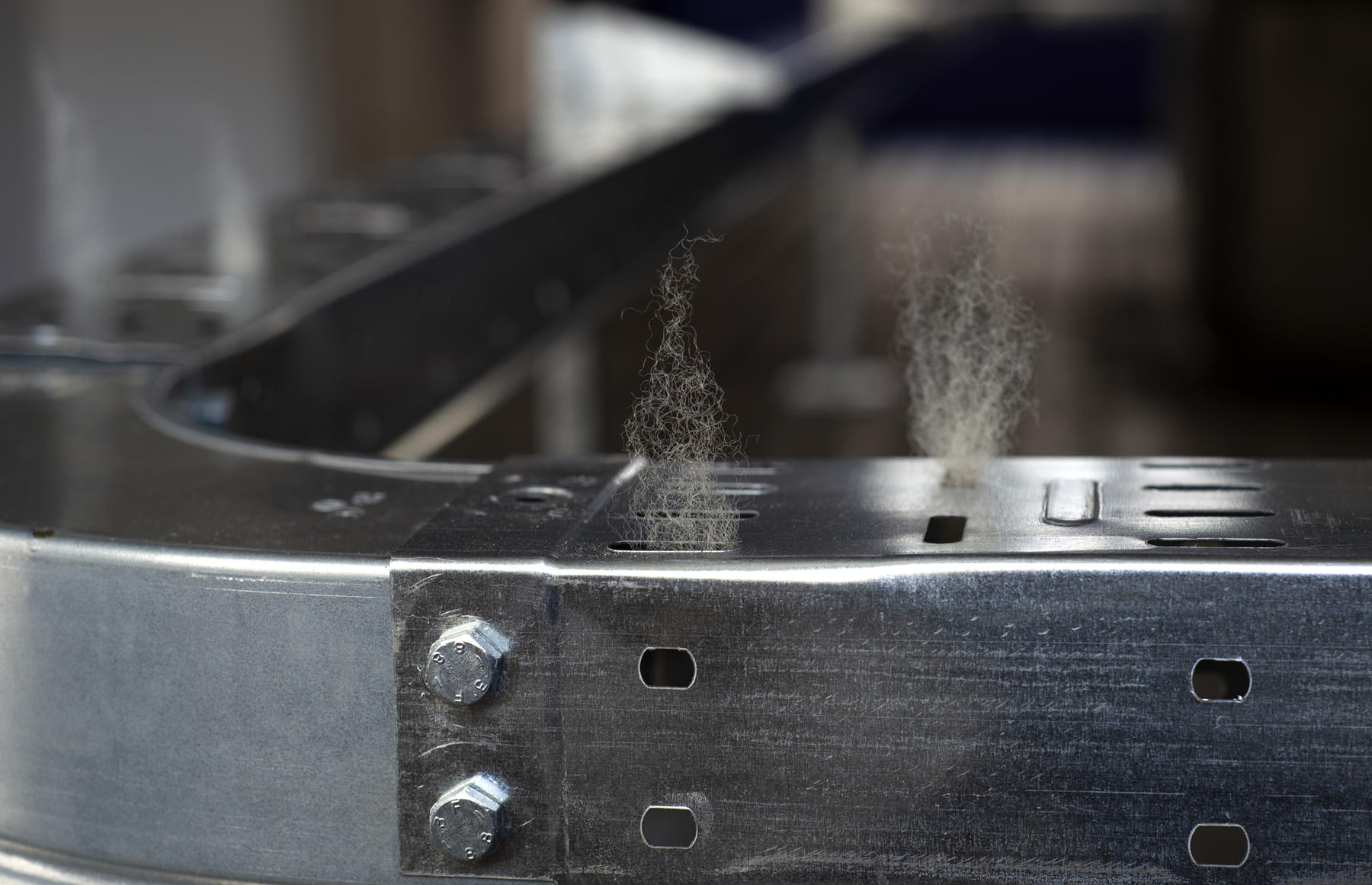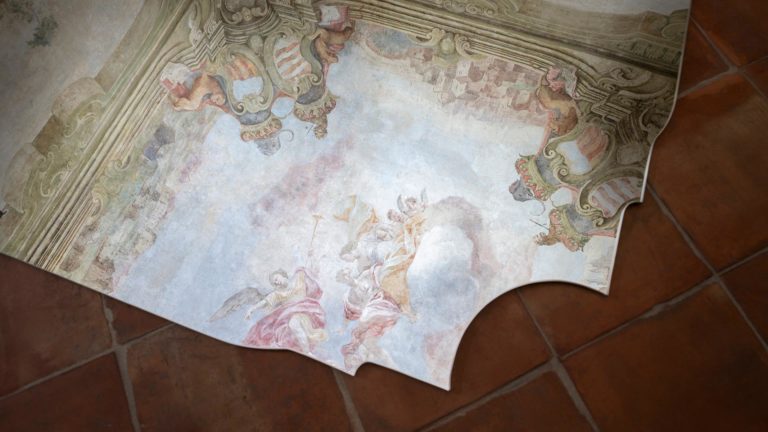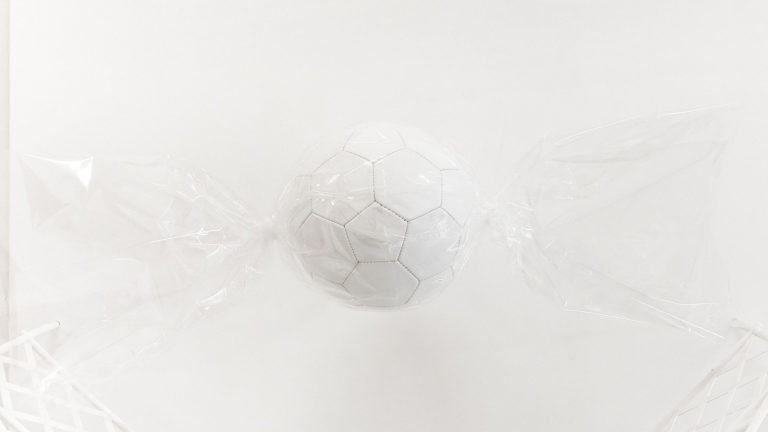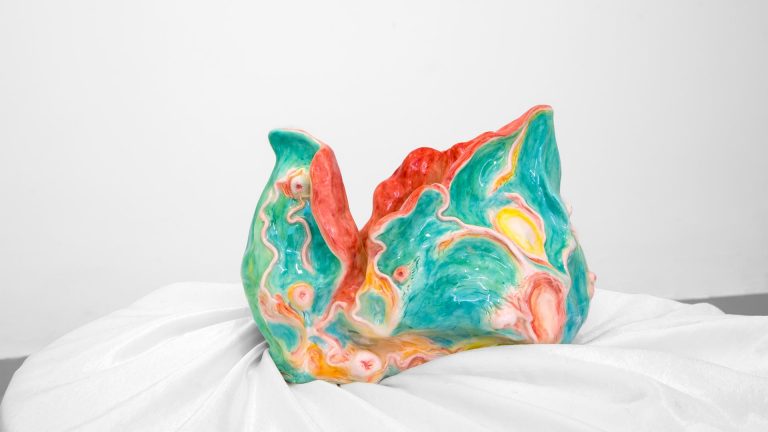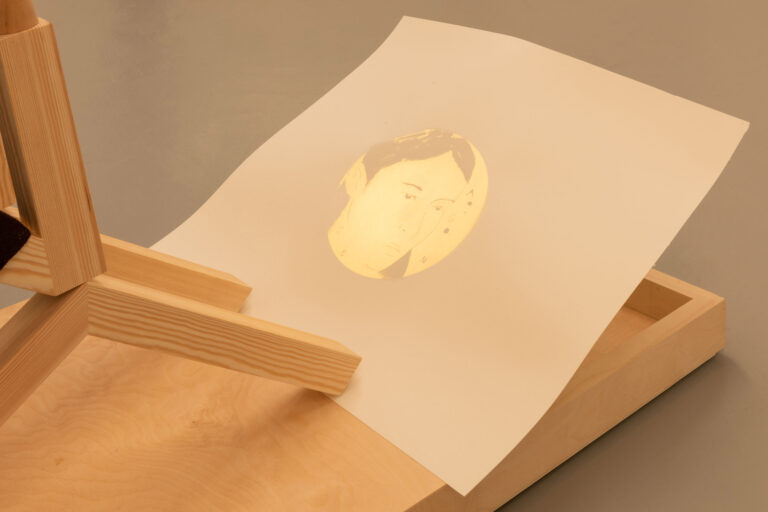Artist: Lauren Gault
Exhibition title: O-N
Curated by: David Dale Gallery
Venue: The Workbench International, Milan, Italy
Date: February 23 – March 31, 2019
Photography: all images copyright and courtesy of the artist, David Dale Gallery and The Workbench International
The voice that ________,
Whispers, press “ On. ’’
Linear and non-linear materials react in different ways to stress and strain. The latter possesses elastomeric properties, meaning that instead of fracturing under pressure they instead give, offering a resistance yet accommodating and subsuming the stress applied. Architectural space, often a mixture of linear and non-linear materials is multiplied by non-linear time to reveal a pliability of its own. The surfaces within a space, through their materiality and complexity offer an indication towards their elasticity, how receptive they will be to a little pressure, if they will absorb or resist new objects being brought in. The space is also a receptacle for non-linear time, that the surfaces and objects of the space contain and manifest the entirety of their histories at once. A room is simultaneously all of its times.
The room which The Workbench inhabits was once fl exible I imagine. However, as objects were added it became more taught. The fl oor, a patterned concrete relief, designed to minimize the travel of small dropped objects, created a possessive nature. The unyielding discomfort of the floor a reminder that objects are not to possess their own agency – they can leave when permission is granted. The addition of the benches tightened the space, until it was reifi ed, the space becoming known only by the descriptions of the benches. Further additions appear rejected, for example the more recent suspended lighting tray or fi re extinguisher. These permanent additions lose a little of their confl ict over time, so as not to appear unduly jarring, just at odds. Whereas, temporary objects, necessitated by the space’s current use as a contemporary art gallery, have a tougher time. They either ricochet off, or are enveloped entirely, depending on their own structural properties.
Within such a loaded space, under the weight of matter and time, new objects can only work with the space, in a subjugated role, or against in opposition.
Lauren Gault’s exhibition, O-n, approaches this space with both these positions in tandem. And it is an approach characterized by contrasting fl uidity and rigidity. Qualitative change and re-enchantment.
The benches have undergone a qualitative change. They are no longer the benches, they are the benches with an elastane covering. The fi tted covering averages the benches positive and negative space, reducing their potency within the room and introducing an elasticity to them, physically as well as their capacity to accept objects within an abstract sense. Reduced to topological surface, the benches now yield to new objects. A large glass piece sits at one end, it’s fi xed fl uidity a manifestation of glass’s phase transition. Its current rigidity just a step in its capacity to return to liquid or graduate to dispersal. The point at which it punctures the surface tension of the elastane redolent of diagrams of space time curvature.
Re-enchantment is the re-appraisal of objects. Developing an object through thought, so that it might gain an additional use or purpose. The added lighting tray is an example of this. The tray which mirrors in part its ceiling hung counterpart, creates new purposes for the length of galvanized steel. While leading a visitor around the space, the object demarcates the volume of the room.
Through drawing attention to an unsuccessful incursion to the space, it seems to hypothesise that the problem is we just need a bit more of it. The object uses the material of the space to increase that elasticity a little more.
The title of the exhibition O-n, uses the obtuse (to the uninitiated, which I count myself within) language of mathematics to suggest some of what I have mentioned here, and some which I haven’t. The title itself though is ephemeral, escaping from a distinct defi nition, it seems to possess a quality of phase change itself. It satisfi es a number of interpretations, to an extent, but defi nitions slip away as soon as they have arrived. To articulate one of these possibilities in support of what is mentioned above, I’ll offer an option.
The O- comes from big O notation a mathematical notation introduced by Paul Bachmann in 1894, originally standing for ordnung in German – or order of in English. The n stands for the number of dimensions of a given space or time.
So, the order of a number of dimensions of space and time.
Elastene text by Max Slaven
This exhibition, curated by David Dale Gallery, Glasgow, is part of an ongoing series of organisational exchanges initiated by David Dale Gallery. The project is preceded by exchanges with Swimming Pool, Sofia and SALTS, Birsfelden, and will be followed by an exchange with Rupert, Vilnius in 2019/20. The Workbench presented a solo exhibition by Milan based artist Mirko Canesi in November 2018, as the initial part of this exchange.
Lauren Gault (b. Belfast, Northern Ireland,1986) lives and works in Glasgow. Recent exhibitions include: present cOmpany, CCA Derry~Londonderry, Northern Ireland (2018); sequins, (with Sarah Rose), Glasgow International, Scotland (2018); lumpers and splitters, Prairie Underground, Seattle, U.S.A (2017); ØY Festival, Papa Westray, Orkney, Scotland (2017); The Surface of Shrimp – The Gesture of Soap, UVE Collection, Berlin, Germany (2017); STEM, Lauren Gault and Sarah Rose, Baltic39, Newcastle, England (2017) he was there when I fi rst smelled the smell, and now he is the smell, (with Zoe Claire Miller), Rinomina, Paris, France (2016); lipstick-NASA, Temporary Commission, Jupiter Artland, Edinburgh, Scotland (2015). Current and upcoming projects include drye eyes, Grand Union, Birmingham (2019) and the Freelands Artist Programme at Gasworks, London (2019 – 2020). Max Slaven is the Programme Director of David Dale Gallery, Glasgow.



